Anwendungsbeispiele
Foundations for agri-photovoltaic installations
Agri-photovoltaics, also known as Agri-PV or solar farming, is a way to combine agriculture with renewable energy production that is ready for the future. These two sectors don’t compete for land – they cooperate. This means solar panels can be installed directly on agricultural land: above crops, pastures or along unused field edges.
But how does it actually work? And more importantly: how can solar panels be safely and permanently installed on farmland without harming the soil or interfering with agricultural use? The answer lies in choosing the right foundation type.
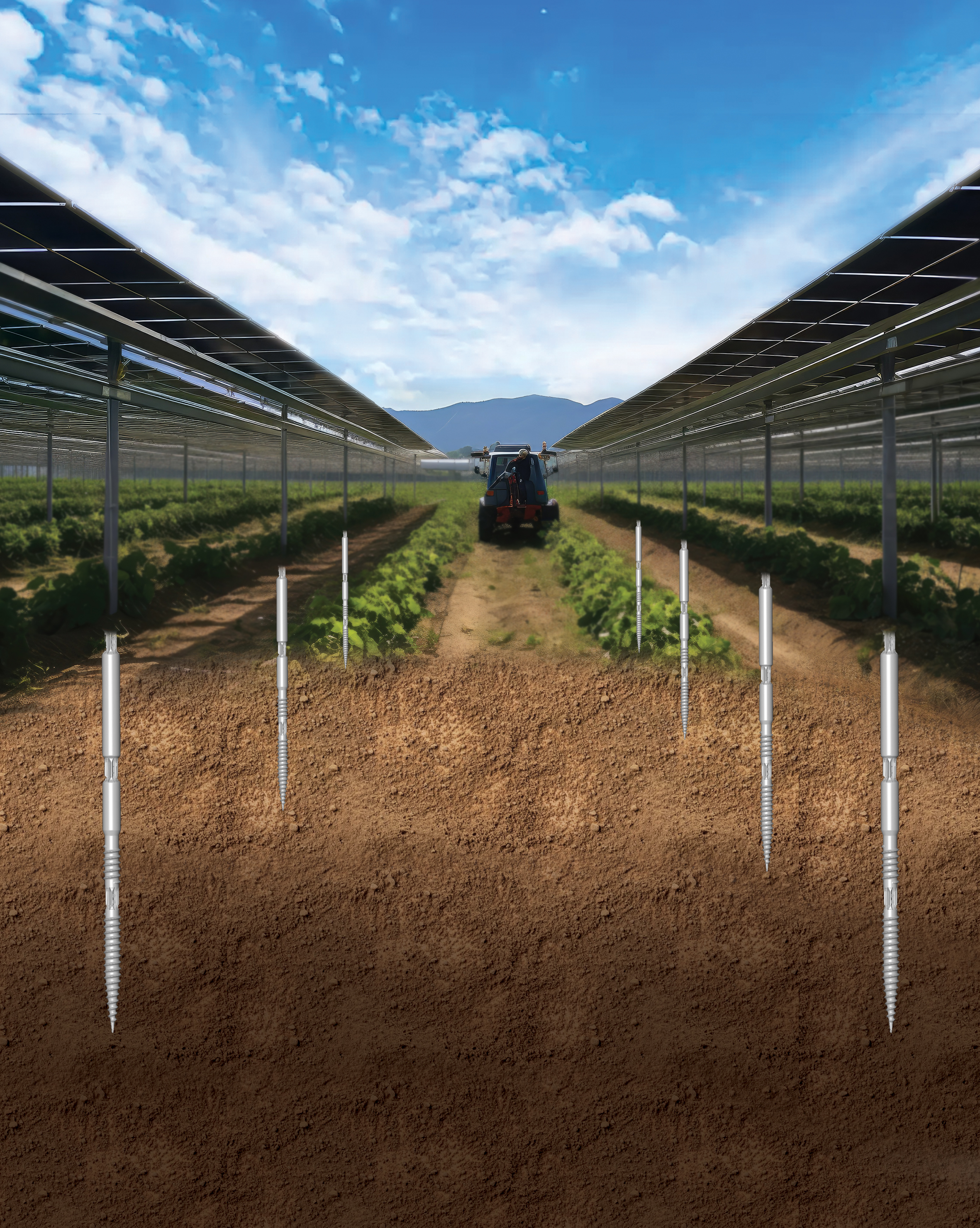
What is Agri-PV?
Agri-PV refers to solar systems designed specifically for use on farms and in agricultural conditions. These systems differ from standard ground-mounted PV installations in terms of purpose, structure, and environmental constraints. Depending on the type of farming, different mounting approaches are used:
Vertical systems, aligned in rows across the field. Ideal for row crops and large machinery access.
Elevated structures, allowing plants to grow freely underneath.
Low-level systems, which work well for grazing animals like sheep, goats, and cows – providing both energy and shade.
Each construction type presents its own technical challenges – especially when it comes to the foundations. They must be stable, environmentally friendly, and resistant to time and weather.
What foundations are used for Agri-PV? A comparison
Choosing the right foundation for Agri-PV is a key step in planning the entire installation. Whether the structure remains stable determines not only its durability and performance but also operational and dismantling costs. When dealing with solar systems installed directly on farmland, the question of foundations becomes even more critical. Why?
Welche Fundamente für Agri-PV? Ein Vergleich
Because a field is not a roof, and soil conditions vary. Sometimes the ground is rock-hard, other times it’s sandy, soft, or uneven. Moreover, farmers or investors often want the option to dismantle the system after 10–20 years and restore the land to its original use. That’s why it's important to look at the most common foundation types and their real capabilities in Agri-PV applications.
Concrete foundations (classic in-ground poured footings) are associated with solidity. And yes, they are durable – but their installation involves disturbing the soil, transporting building materials, using heavy machinery, and emitting large amounts of CO₂. For solar systems meant to coexist with nature, this is a solution from another era. Moreover, after decommissioning, concrete is difficult to remove, conflicting with the DIN SPEC 91434 standard, which requires full site restoration.
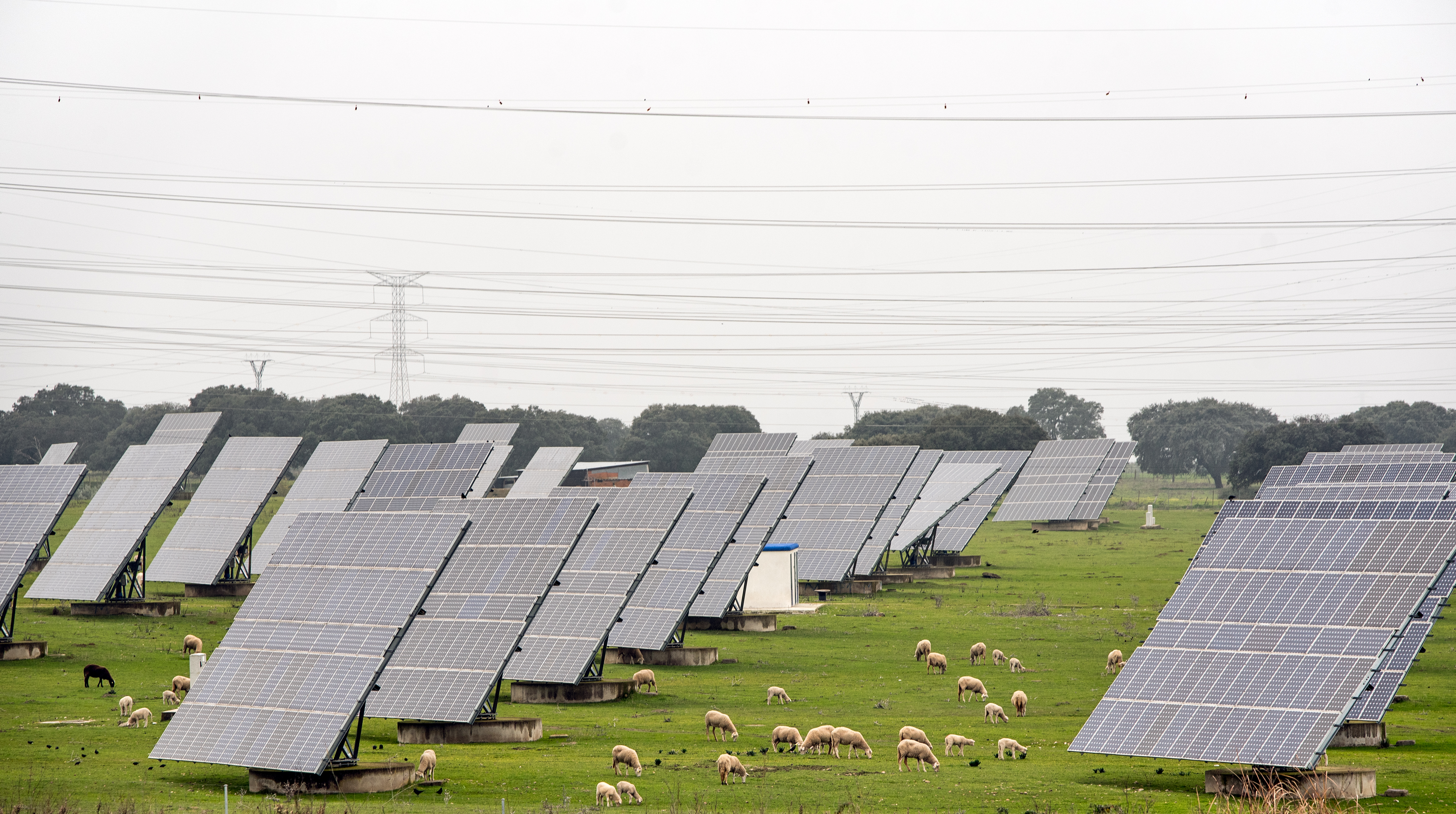
Ballasted systems, using prefabricated concrete slabs for weight, seem simpler. They don’t disturb the soil directly, but they require flat and stable terrain – which is rarely the case in open fields. Their stability in strong winds or on sloped land is also limited.
Driven piles are widely used on large solar farms today. They allow fast installation and provide good load-bearing capacity. However, they have a downside – their installation involves strong impact, noise, and vibrations, which can damage the local ecosystem and humus layer. In some regions – particularly those with environmental restrictions or obstacles in the ground (like stones) – driven piles are simply not an option.
Against all these options, screw foundations stand out. They’re gaining popularity across Europe – especially in Agri-PV projects in Poland and beyond. This solution is not only fast but also environmentally friendly. Mechanically screwed into the ground, screw piles require no concrete, no excavation, and no heavy machinery. Even better – they can be installed year-round, in any weather. And most importantly, after decommissioning, they can simply be unscrewed – leaving the ground intact, as required by DIN SPEC 91434.
Thanks to compliance with EN 62817, screw piles can also be used in dynamic installations (e.g., trackers), making them the most universal and future-proof foundation option for Agri-PV systems.
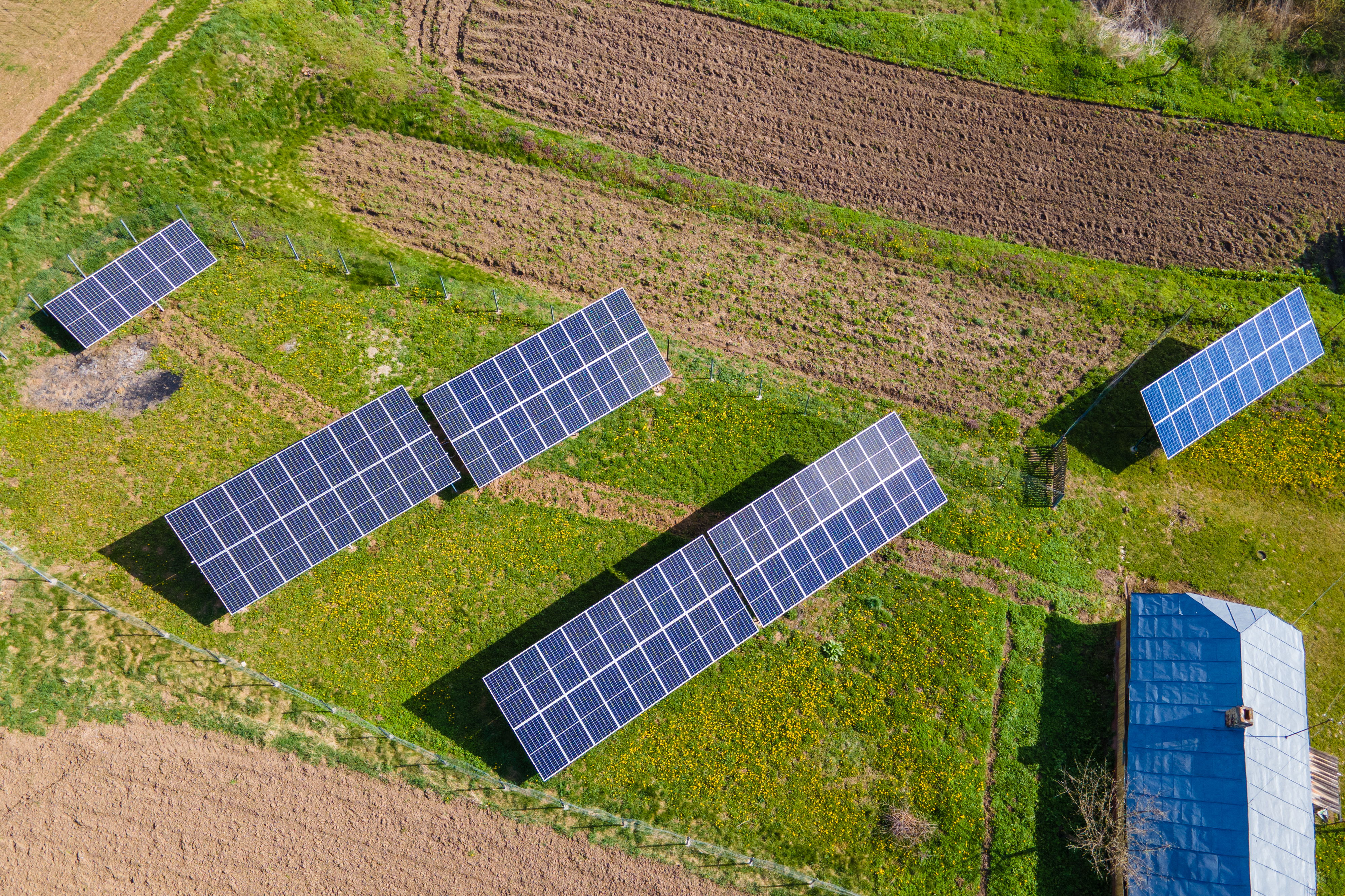
Why Agri-PV is the future of farming in Poland and Europe
Solar panels on farmland are more than just a way to generate electricity as prices rise and the climate changes. They’re a smart tool for agriculture:
Solar panels provide shade to crops, reducing heat stress.
They reduce water evaporation, helping soil retain moisture during dry periods.
They enable dual land use – for both food production and clean energy generation.
They reduce energy consumption on farms, saving money in the long run.
They create microclimates under the panels, supporting biodiversity.
No wonder Agri-PV is gaining momentum across Europe and quickly becoming a practical tool for sustainable agriculture in Poland.
Why screw foundations are the best for Agri-PV
Screw foundations offer unmatched advantages among all available technologies:
Easy to remove after use
Certified and EU-compliant
Designed for real agricultural conditions
Fast and clean installation
No concrete, no excavation
If you're looking to install solar panels on your land without sacrificing soil health, land value, or farm access, screw foundations might be the answer.
Need professional advice? Our engineers can provide a full foundation package, recommend the best system type, and help assess your soil.
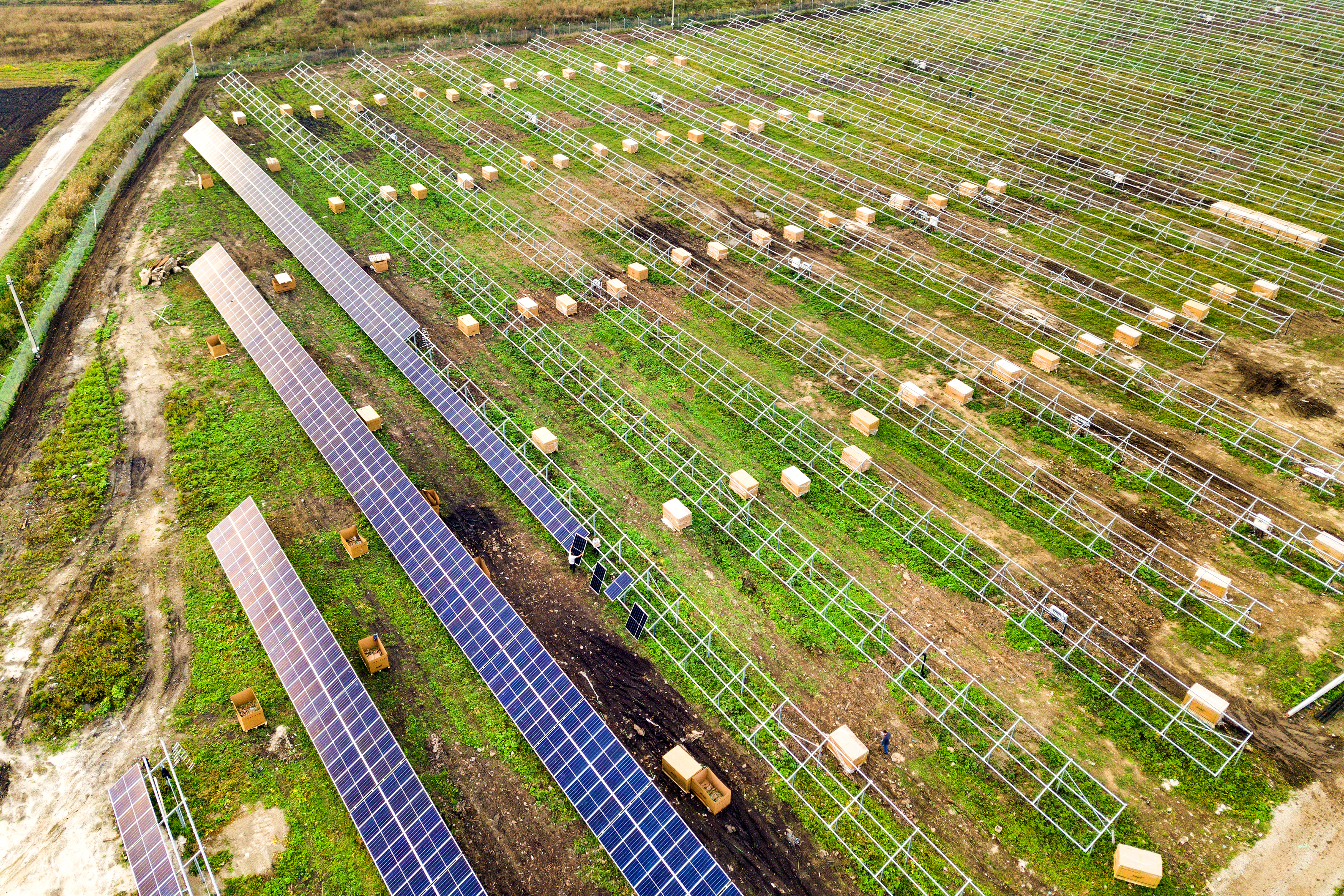
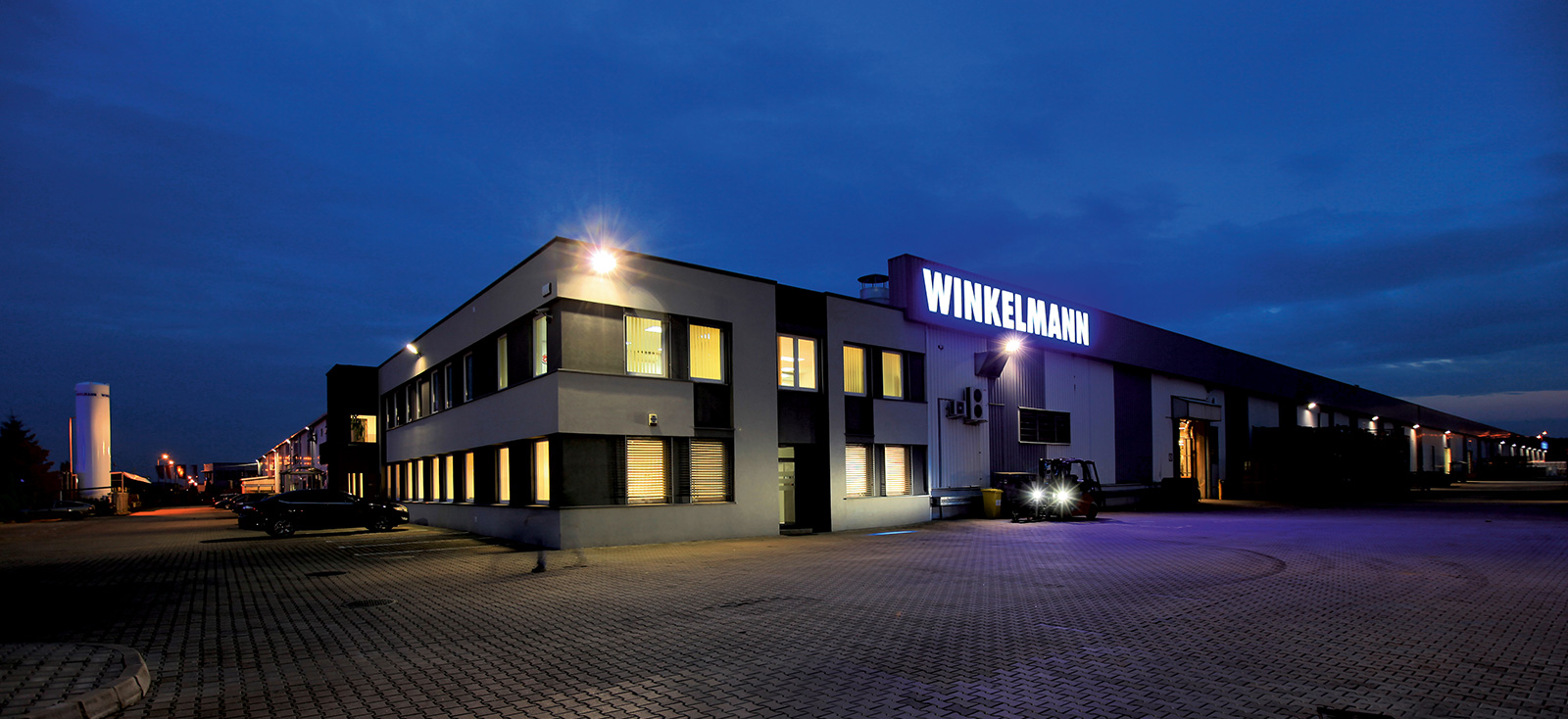
Do you have a project or a question?
Are you interested in our offer?